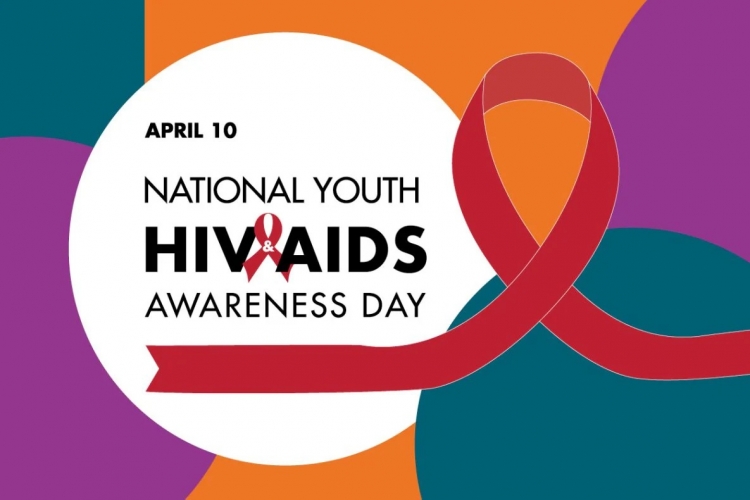Risky sexual behaviors of youth, HIV testing and treatment
Centers for Disease Control and Prevention (CDC)
Because April 10, 2024 was designated as National Youth HIV/AIDS Awareness Day, the CDC is presenting information relevent to the human immunodeficiency virus (HIV) and acquired immunodeficiency syndrome (AIDS).
AIDS is the late stage of HIV infection that occurs when the body's immune system is badly damaged because of the virus. In the U.S., most people with HIV do not develop AIDS, because taking HIV medicine as prescribed stops the progression of the disease.
Almost half of young people ages 13 to 24 with human immunodeficiency virus (HIV) do not know they are infected with the virus. For youth who test negative, testing services can connect them to HIV prevention resources. Youths who test positive can be connected to health services and take medicine to treat HIV.
Treating HIV means taking medicine to lower the amount of virus in the blood, to a point so low a test can’t measure it. This is the best thing to do to stay healthy.
What the Data Shows
Risky sexual behaviors can lead to HIV, sexually transmitted diseases (STDs), and pregnancy. CDC data shows declines in risky sexual behaviors among high school students during 2011 to 2021. Fewer students are currently sexually active, and fewer have ever had sex — down from 47% in 2011 to 30% in 2021.
However, many youth engage in health risk behaviors and experiences that can result in unintended outcomes.
According to CDC Data:
• Condom use is down. Condom use among sexually active students decreased from 60% in 2011 to 52% in 2021. This decrease represents an increased health risk for HIV and STDs.
• Substance use can lead to high-risk behaviors. When youths are under the influence of drugs or alcohol, they may engage in high-risk behaviors, such as sex without a condom or not taking medicine to prevent or treat HIV.
• Some youth are at higher risk. Youths at greater risk for negative health outcomes include lesbian, gay, bisexual, and questioning (LGBQ+) youths. For example, about 1 in 5 LGBQ+ students experienced sexual violence within the past year, compared to 1 in 10 of their heterosexual classmates. LGBQ+ students (21%) were also more likely to have used illegal drugs than heterosexual students (11%).
Skills Needed to Support Health
The data show there is work to be done to support healthy adolescent development. Addressing HIV among youth means teaching them skills to reduce their risk, make healthy decisions, and get treatment and care if needed.
What Schools Can Do
Schools can help prevent HIV, as they reach millions of students every day. Schools are a place for students to learn about the dangers of unhealthy behaviors, and to practice skills that promote a healthy lifestyle. Schools are in a unique position to help youth adopt behaviors that reduce their risk for HIV.
How Schools Can Encourage Youths to Stay Healthy
• They can teach students the basics about HIV and other STDs.
• They can promote communication between youths and their parents or families.
• They can support student access to confidential HIV counseling and testing services.
How Schools Can Encourage Students to Get Tested for HIV
• They can use health risk behavior data to prioritize needs for health education or services.
• They can connect students to health services that include confidential HIV testing and counseling.
• They can encourage students and their parents or families to talk about HIV.
What Youths Can Do
Youths need to understand their risk and know how to protect themselves against HIV. They can:
• Get educated. Learn the basic facts about HIV transmission, testing, and prevention.
• Get talking. Talk with parents, families, teachers, doctors, and other trusted adults about HIV and sexual health.
• Get tested. The CDC recommends that everyone, ages 13 to 64, get tested for HIV, at least once, as part of routine health care. Contact a health care provider about testing.
• Get medicine. If you test positive for HIV, get support, seek treatment, and stay in care to remain healthy and prevent passing the virus to others.
What the CDC is Doing
The CDC’s adolescent and school health program, "What Works in Schools," implements activities focused on the primary prevention of HIV within the U.S. education system. The CDC reaches approximately 2 million students by funding education agencies and a network of supporting agencies in school-based HIV, STD, and pregnancy prevention.
These Funded Partner Agencies:
• Deliver HIV, STD, and pregnancy prevention programs grounded in the latest research,
• Select and implement effective health education curricula,
• Build local capacity to connect students to school- and community-based health services, and
• Establish safe environments where students feel connected to school and supportive adults.
Key Points
• Youths need to know their HIV status to stay healthy. In the United States, 19% of new HIV diagnoses in 2021 were among young people ages 13 to 24.
• Getting more youths tested for HIV is important for prevention, since only 6% of high school students have ever been tested.
